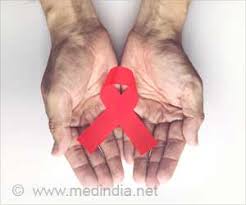Source: medicalxpress.com
The most effective way to reduce HIV-related deaths and prevent onward transmission is to diagnose and treat all persons as soon as possible after HIV infection. According to a study published in Clinical Infectious Diseases, New Yorkers living with HIV are being treated sooner after infection. The time to treatment initiation was reduced in tandem with expanded HIV testing and treatment efforts in New York City.
An analysis of 28,162 New Yorkers diagnosed with HIV found considerable progress in rapid treatment initiation. The time from diagnosis to treatment initiation decreased by 60 percent from 2006 to 2015 and was a median of 0.2 years (~2.4 months) for people diagnosed in 2015. The time from estimated infection to diagnosis decreased by 28 percent to a median of 3.3 years among people diagnosed in 2015.
“The elapsed time from infection to diagnosis or treatment initiation matters because this represents time when an individual misses out on the benefits of treatment,” says Dr. McKaylee Robertson, the study’s lead author and an epidemiologist at the Institute for Implementation Science in Population Health (ISPH) at the CUNY Graduate School of Public Health and Health Policy (CUNY SPH). “If we can continue to reduce diagnosis and treatment delays, we may continue to see declines in HIV incidence and mortality. These results suggest that we need more effective implementation strategies for earlier HIV diagnosis and linkage.”
An overwhelming body of scientific evidence has established that “HIV Undetectable=Untransmittable (U=U)” and people living with HIV who receive treatment to stably suppress the virus cannot transmit the virus to sexual partners. To eliminate HIV as a public health threat, the elapsed time between infection and treatment must be minimized.
The study was conducted by a team of investigators at the ISPH in collaboration with the New York City Department of Health and Mental Hygiene and used population-based HIV surveillance data.
“This study shows that NYC has made significant improvements in quickly getting people on treatment, and these improvements coincide with many citywide testing and treatment campaigns,” says Dr. Sarah Braunstein, the study co-author and director of HIV epidemiology at the New York City Department of Health and Mental Hygiene. “New York’s robust infrastructure for HIV prevention and treatment likely contributed to reductions in diagnosis and treatment delay.”
Dr. Denis Nash, the study’s senior author and distinguished professor of public health at CUNY SPH, says the new metrics developed as part of this study can better target HIV testing services towards those with longer standing undiagnosed HIV infection.
“The biggest potential for impact on public health going forward will be via much-needed gains in earlier HIV diagnosis,” Nash says. “With more than half of people diagnosed with HIV three or more years after infection, there is much room for improvement in the impact of HIV testing services.”
